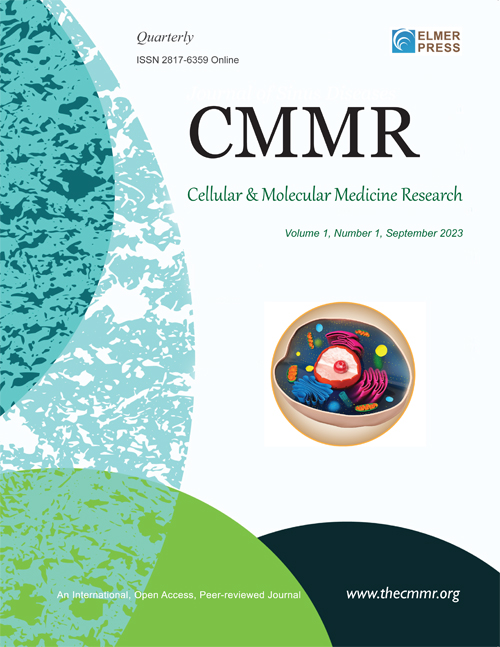|
ISSN 2817-6359 (online) | Quarterly | Open Access | Toronto Canada |
Journal archiving and digital preservation: Portico |
| Joining Editorial Board |
 Invitation to Join the Editorial Board The Cellular and Molecular Medicine Research (CMMR) is multidisciplinary, open access, peer-reviewed biomedical journal with a renewed style, approach, and connection with scientists and physicians worldwide. CMMR is a creative and innovative hub of the future. We invite researchers in the field of cellular and molecular medicine fields to join the Editorial Board, if you are interested, please contact editor@thecmmr.org for details. |
Highlights |
-
 Formononetin: A Phytoestrogen and Isoflavone, Relaxes Guinea Pig Gallbladder Strips
Formononetin: A Phytoestrogen and Isoflavone, Relaxes Guinea Pig Gallbladder StripsFormononetin, a phytoestrogen and isoflavone, is present in red clover and several types of beans. It relaxes vascular smooth muscle and prostate smooth muscle. The purpose of this study was to determine if formononetin had an effect of gallbladder motility. An in vitro technique was used to determine which system mediated the relaxation.
Read More >> -
 Stress, Autoimmunity and Mitochondrial Dysfunction in Chronic Obstructive Pulmonary Disease
Stress, Autoimmunity and Mitochondrial Dysfunction in Chronic Obstructive Pulmonary DiseaseChronic obstructive pulmonary disease (COPD) includes several clinical syndromes, most notably emphysema and chronic bronchitis, respiratory bronchiolitis, asthma and COPD overlap syndrome (ACOS), COPD and obstructive sleep apnea (OSA) overlap syndrome and combination of pulmonary fibrosis and emphysema (CPFE).
Read More >> -
 Calcitonin Gene-Related Peptide Enhances the Expression of Signaling Molecules of the Wnt 7b/Beta-Catenin Pathway in Rat Type II Alveolar Epithelial Cells Under Hyperoxia
Calcitonin Gene-Related Peptide Enhances the Expression of Signaling Molecules of the Wnt 7b/Beta-Catenin Pathway in Rat Type II Alveolar Epithelial Cells Under HyperoxiaHyperoxic lung injury is characterized by epithelial cell death and leukocyte infiltration/inflammation in the lung. Calcitonin gene-related peptide (CGRP) has been shown to improve survival of lung epithelial cells and reduce hyperoxic lung injury in rats.
Read More >> -
 WNIN Mutant Obese Rats Develop Acute Pancreatitis With the Enhanced Inflammatory Milieu
WNIN Mutant Obese Rats Develop Acute Pancreatitis With the Enhanced Inflammatory MilieuWNIN/Gr-Ob rats demonstrate features of metabolic syndrome that include obesity, insulin resistance, impaired glucose tolerance, and hyperinsulinemia. The impetus obtained from earlier studies on these rats demonstrates an inflammatory milieu peaking between 6 and 9 months of age in adipose, pancreas, and bone marrow/mesenchymal stem cells.
Read More >> -
 Recent Advances in Characterization of Pre-Leukemic/Leukemic Stem Cells in Acute Myeloid Leukemia
Recent Advances in Characterization of Pre-Leukemic/Leukemic Stem Cells in Acute Myeloid LeukemiaAcute myeloid leukemia (AML) is a heterogeneous disease organized as a hierarchy similar to normal hematopoiesis. It is maintained and progresses by self-renewing leukemia stem cells (LSCs) that are usually quiescent and resistant to current chemotherapies and thus, contribute to leukemia relapse.
Read More >>
Editorial |
|
| Featured |
|
| | |||






